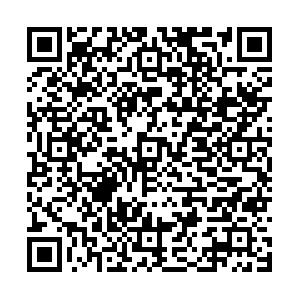A Survey on Air-Ground Networks of Unmanned Aerial Vehicles
-
摘要:
无人机具有快速部署、成本低廉等优势. 无人机空地网络通过将基站设备部署至升空无人机平台,能从空中快速构建对地覆盖网络,因而在应急救灾、偏远覆盖、智能交通、智慧城市等方面具有广阔的应用前景,近年来受到广泛关注. 面向无人机空地网络应用场景,结合无人机的机动、组网、载荷等特点,围绕无人机空地网络覆盖性能提升、无人机空地网络通感算一体化设计、智能反射面技术辅助的无人机空地网络、鲁棒无人机空地网络四个维度,从网络场景、关键技术挑战、性能优化控制方法等几方面梳理无人机空地网络的研究现状,并探索优化提升无人机空地网络性能的未来研究方向.
Abstract:Unmanned aerial vehicles (UAVs) can be rapidly and cost-effectively deployed. By deploying the base station equipment to the launching UAV platform, the air-ground networks of UAVs can quickly build ground coverage network from the air, so it has broad application prospects in emergency relief, remote area coverage, intelligent transportation, smart city, and other aspects and has received wide attention in recent years. Based on the application scenario of air-ground networks of UAVs, the characteristics of UAVs’maneuver, network, and load were considered. From the four dimensions of coverage performance improvement of air-ground networks, integrated communication-sensing-calculation design of air-ground networks, reconfigurable intelligent surfaces (RIS)-assisted air-ground networks, and robust air-ground networks of UAVs, the research status of air-ground networks of UAVs was reviewed in terms of network scenarios, key technical challenges, and performance optimization control methods. In addition, the future research direction of optimizing the performance of air-ground networks of UAVs was explored.
-
以多旋翼和固定翼为代表的无人机设备因具有低成本、快速部署、易于操控等优势,近年来得到了迅速发展. 依托无人机平台也形成了多种新型应用模式,无人机空地网络就是其中的典型应用代表[1-2]. 该网络通过将原安装于地面的基站设备部署至升空无人机平台,利用无人机的低成本和快速部署优势,构建无人机间、无人机与地面间网络连接,以从空中实现对地覆盖网络,从而有效解决地面通信基础设施受损或偏远地区的网络覆盖问题[3-4].
无人机的空中机动性使得原有地面通信网络部署方案不再适用,提升基于无人机的空地网络覆盖性能是构建无人机空地网络的基础. 在应用方面,伴随着自动驾驶等新型应用模式的涌现,网络内生感知和计算能力也成为无人机空地网络的关键需求之一,在考虑无人机平台机动属性前提下提升无人机空地网络的通信、感知、计算综合能力也成为适配该应用场景的核心问题[5-8]. 面对城市、山区等空地环境复杂、遮挡较强的场景,智能反射面(RIS)等新兴通信技术可以辅助改善通信传输环境,是提升无人机到地面终端间通信质量的一个重要手段[9-12]. 此外,无人机易受复杂多变天气地形等工作环境影响,多无人机协同组网易受相互之间的干扰影响,如何提升无人机空地网络的鲁棒性能,构建无人机空地鲁棒网络,适配不同工作环境、复杂组网及干扰环境,保障无人机空地网络的安全可靠高效运行,也是无人机空地网络的核心研究问题[13-18].
针对无人机在上述空地网络覆盖性能提升、无人机空地网络通感算一体化设计、RIS辅助无人机空地网络、无人机空地鲁棒网络设计维度的性能提升和关键挑战,已有的综述论文并未进行充分论述. 本文将围绕上述场景,进一步结合无人机的机动、组网、载荷等特点,从关键技术挑战、性能优化控制方法等方面探讨无人机空地网络的研究现状并探索提升无人机空地网络性能的未来研究方向.
1. 无人机空地网络覆盖性能优化
1.1 网络场景
地面基站通常布设成本高、建设周期长、对地形地貌要求高,无法在偏远和灾害地区提供通信服务. 为填补地面基站覆盖空缺,可以利用无人机快速部署优势,通过将通信设备加装到无人机上形成空对地覆盖网络,实现为大型灾害现场提供应急通信保障,为无通信基础设施区域提供临时通信服务,为偏远地区提供传感器数据收集等应用.
如图1所示,无人机空地网络以固定翼或多旋翼无人机为平台,以单架无人机或多架协同组网的方式提供对地的网络覆盖服务. 固定翼与多旋翼无人机特点各不相同,因而所能提供的对地覆盖能力也不同. 具体而言,固定翼无人机承重载荷量大,对通信设备的重量限制较少,但需要快速飞行来维持升空能力,因此,当加装通信设备后,固定翼无人机的机动特性可能导致其无法对同一地面区域提供持续稳定覆盖[19]. 而多旋翼无人机具备空中悬停的功能,能够为地面同一区域提供持续性的网络覆盖[20]. 此外,为充分利用固定翼无人机与旋翼无人机的优势,固定翼无人机与旋翼无人机可以同时向地面用户提供覆盖服务. 在多类型无人机共存的混合网络中,固定翼无人机飞行高度高、有效载荷大的特点使其通常作为网络的控制与调度中心,实现资源与轨迹的联合管控,并承担与用户和旋翼无人机通信的功能. 旋翼无人机可以根据地面用户的业务需求提供灵活、多样化的服务,通常被视为近地面基站.
1.2 关键技术挑战
为提升无人机空地网络的覆盖性能,目前,采用的典型评价指标主要集中在网络对地有效覆盖面积[21-24]、接入用户数量[15-16, 25-26]、接入用户中断概率[27-31]等方面. 比如,无人机空地网络优化方案会追求在接入用户数量较大且接入用户中断概率降低的情况下,最大化对地有效覆盖面积.
为提升无人机空地网络的覆盖性能,相关研究工作主要围绕无人机飞行轨迹控制[21-23]、位置部署优化[13, 25-26]及面向机载通信系统的功率资源分配和覆盖优化[23, 27-31]等方面展开. 在此基础上,进一步研究技术手段之间的耦合特性,并开展联合设计、联合管控[20]. 该研究主要面临的挑战有如下2点:
1) 单无人机部署且存在空地双移动约束下的航迹与网络资源联合管理问题. 当固定翼无人机为地面移动用户(如车辆用户、高铁用户等)提供网络覆盖服务时,将会出现空地双移动场景,在该场景下,原有地面网络资源分配问题转换为联合网络资源分配和航迹优化问题. 如何在这种空地双移动性场景下,通过联合优化飞行轨迹和网络资源,提升接入用户数量和对地覆盖连续性是需要解决的关键问题之一.
2) 多类多个无人机联合部署且存在空地双移动约束下的无人机数量、轨迹、网络资源最优配置问题. 提升对地覆盖连续性的手段是增加无人机部署种类和数量,从而将单无人机部署场景扩展至多类多个无人机联合部署场景. 然而,在多无人机部署场景下,如何联合优化固定翼、旋翼无人机部署数量和飞行轨迹、无人机间和无人机与地面间的网络频率资源分配与干扰管理,从而以最小的无人机成本提升接入用户数量和对地覆盖连续性,是需要解决的关键问题之一.
1.3 无人机空地网络覆盖性能优化控制方法
针对上述无人机空地网络覆盖问题,当前研究采用的典型控制方法包括基于强化学习、凸优化以及启发式算法思想的无人机空地网络覆盖性能优化控制方法.
基于人工智能相关技术,文献[18]分析了深度强化学习和深度学习在多无人机辅助网络中的覆盖性能,研究表明:强化学习方法以较慢的收敛速度和偶尔下降的风险为代价实现了较高的总体峰值用户覆盖率;基于多智能体协作的解决方案牺牲了覆盖峰值性能以换取覆盖稳定性和收敛性提升. 文献[20]提出多无人机场景下以最大化用户吞吐量和满足用户速率需求为目标的轨迹和功率控制联合优化,基于多智能体Q学习算法,根据用户的移动性确定无人机在每个时隙的最优位置和发射功率,以此向地面移动用户提供高质量的覆盖服务. 文献[21]针对不规则地形覆盖场景,分析无人机覆盖三维不规则地形的问题,并设计基于深度强化学习的无人机轨迹优化方法,以提升网络覆盖面积与覆盖持续时间. 此外,针对无人机部署位置的优化问题,许多研究还引入了聚类等智能算法用以提升无人机空地网络的覆盖能力[16-17, 31].
文献[23]将有限时间内的无人机空地网络空地覆盖问题建模为一个最大化覆盖面积与服务时间之比的问题,通过凸优化方法设计无人机飞行轨迹以最大化该目标. 文献[14]通过联合优化无人机的二维布局和用户关联问题,力求以最少的无人机数量实现覆盖用户数量的最大化. 对于动态部署的无人机,其飞行轨迹和功率对通信中断概率有直接影响. 因此,许多研究基于凸优化技术来联合优化无人机的动态飞行轨迹和发射功率,从而最小化通信中断概率[27-30]. 文献[32]同时考虑了无人机的功率控制与带宽分配,并将原始问题转换为拉格朗日对偶问题,通过联合优化无人机轨迹、带宽分配与功率控制,实现所有用户的最小平均吞吐量最大化.
基于传统的启发式方法,针对目标区域的面积覆盖率最大化问题,有许多研究考虑了无人机部署位置的影响情况. 通过平衡优化、搜索算法等技术实现部署位置的优化控制,从而达到网络覆盖率最大化[24]. 文献[1]旨在为受灾区域用户尽可能提供接入服务,并围绕用户接入百分比性能最大化进行优化算法设计,提出了一种两阶段解决方案:首先,基于遗传算法确定无人机的初始部署位置;然后,通过局部搜索算法设计无人机的飞行轨迹. 文献[13]考虑在一个多无人机协同覆盖场景中,最大化无人机的面积覆盖率,提出基于最大似然估计的热点区域确定算法以获得需要覆盖的热点区域,并设计改进布谷鸟搜索算法以优化无人机的部署位置. 文献[33]提出一种基于网络的异构粒子群优化算法,以实现复杂无线电覆盖问题及用户总数据速率最大化问题的联合优化. 该算法被应用于空对地下行传输中,通过多架无人机的优化部署,为一组均匀分布并具有不同数据传输速率需求的用户提供高质量的无线连接服务.
现有研究通常针对用户静止场景下,采用传统优化算法实现轨迹与资源的控制以提高网络性能. 当地面用户数量增加且用户出现高移动特性时,如何进一步优化空地双移动约束下的对地网络覆盖性能还需要进一步分析.
2. 无人机空地网络通感算一体化设计
2.1 网络场景
随着物联网的发展,传感设备被广泛应用于环境监测、智能交通、智慧工厂、智能码头等场景中. 据估计,到2030年,世界上传感器的数量将超过100万亿[34]. 围绕物联网在感知、传输、计算、处理等方面的应用需求,无人机在提供数据传输通信服务的同时,还可以利用其移动范围广、部署成本低、组网灵活等特点实现感知和计算服务,构建基于无人机的通感算一体化网络(如图2所示). 然而,在构建基于无人机空地网络的通感算一体化网络时,同时整合通信、感知、计算三维资源,并综合考虑三者之间的相互影响及耦合关系,进行系统综合设计及联合优化.
2.1.1 基于无人机的通感一体化设计
通感一体化通过在频谱、硬件、基带、信号等多个维度共享系统资源,实现通信和感知双功能的一体化集成. 作为第六代移动通信(6G)的六大使用场景之一,其典型用例包括高精度定位、高分辨率成像、移动目标追踪等,这些应用将全面推动智能交通、智慧城市、智慧农业等行业的快速发展[35]. 无人机空地网络因能够实现灵活的拓扑结构和按需的连接服务,在上述场景中也有着重要应用. 此外,如果无人机空地网络中单独部署通信和感知系统,不可避免地增加无人机载荷,导致无人机机动性能损失和电池寿命缩减,不利于无人机空地网络的进一步发展. 因此,通过在空口侧的一体化新波形设计、帧结构设计、资源分配、波束管理,以及网络侧的融合架构设计、数据管理与传输等,基于无人机的通感一体化设计能够减少无人机有效载荷、提升无人机空地网络的频谱和能量效率,在智能交通、智慧城市等应用场景中有良好的应用前景[36-37].
2.1.2 基于无人机的通算一体化设计
随着智能手机和传感器等无线终端设备的爆炸式增长,产生了大量计算密集型和时延敏感型应用. 由于无线终端设备自身体积和成本的限制,对计算任务的处理能力受限,因而催生了云计算和边缘计算技术[38]. 与传统的云计算相比,边缘计算单元更靠近终端设备,可以缓解云计算造成的回程时延及拥塞等问题[39]. 然而,在偏远地区或灾害地区,地面通信基础设施等边缘服务器往往不可用,亟需探索在地面基础设施场景缺失情况下的边缘计算解决方案.
围绕上述问题,可以利用无人机飞行灵活、部署简易以及快速形成视距链路等特点,对地面特定区域提供稳定高效的通信、计算和存储服务[40- 41]. 在这种场景下,将轻量化边缘服务器部署在无人机上,无人机作为边缘计算节点可以对有卸载需求的地面设备提供边缘计算服务[42]. 此外,由于单无人机的业务承载能力和计算能力有限,很难应对大面积区域内大容量、多终端的任务卸载,因此,可以进一步引入多架无人机共同提供计算服务[43- 44]. 在多无人机场景下,需要重点研究多无人机之间的协作计算、任务分配、迁移、中继、路由等问题,保证在任务时延受限的情况下,提升系统的计算服务效率.
2.1.3 基于无人机的通感算一体化设计
在上述无人机通算、通感一体化设计基础上,将无人机应用扩展至通感算一体场景. 在通感算一体设计中,由于原始感知数据的数据量极大且计算处理复杂度极高,可以进一步将通算一体扩展至通感一体中,即首先利用边缘节点对感知的原始数据进行预处理,从而降低数据量. 后通过通信数据传输将预处理后的数据发送给多个无人机节点,利用多无人机的计算能力完成后端数据联合处理.
2.2 关键技术挑战
为综合提升无人机空地网络通感算一体化性能,目前采用的典型通信性能评价指标有接入时延、接入用户数量、传输速率等;感知性能评价指标有感知精度、目标感知刷新率等. 以上述目标为牵引,优化无人机空地网络通感算一体化性能的关键技术挑战主要包括:
1) 单无人机部署场景下,如何优化无人机飞行轨迹、带宽、波束、功率、时间资源,提升通感算各功能域性联合性能?
2) 多无人机、无人有人混合模式部署场景下,如何优化无人机部署数量和飞行轨迹、有无人主从控制,并进一步结合频率规划、带宽、波束、功率、时间资源管控,从而以最小的部署成本,提升通感算各个功能域的联合性能?
2.3 无人机空地网络通感算一体化性能优化控制方法
面向上述无人机空地网络通感算一体化系统的关键技术挑战,当前研究人员主要基于组合优化、深度强化学习等机器学习方法进行飞行和通感算资源的优化控制.
基于组合优化方法,在无人机通感一体化方面,文献[45]研究了无人机通感一体化系统中的用户/目标到无人机之间的角距与无人机位置之间的关系,以及无人机部署及轨迹对最优资源分配和系统性能的影响,并联合优化了发射波束成型和无人机部署及轨迹,在最大化通信性能的同时满足感知性能要求. 文献[46]针对多旋翼无人机空地网络,考虑到无人机飞行和悬停所消耗的能量远大于通信和感知的能耗,因此,在优化无人机飞行轨迹时,在考虑通信和感知的能耗外,还考虑了无人机飞行能耗. 在实际应用中,通信任务通常在一段时间内连续进行,而感知任务往往根据目标的位置和速度以及任务的时效性要求,以一定的感知频率执行. 然而,文献[45-46]强制在通信过程中进行持续的感知,忽略了通信和感知的时间需求,不可避免地会导致更高的能量消耗,频谱资源的浪费,并且对通信用户造成长期的干扰. 因此,文献[5]考虑到通信和感知对时间的需求差异,提出一种周期性感知的无人机空地网络架构,即在无人机连续通信的过程中周期性进行感知,并通过交替优化算法联合优化了感知时间、无人机轨迹和波束成型,最大化平均吞吐量的同时满足感知波束方向图增益的要求. 文献[6]提出一种基于无人机空地网络的自适应通感一体化机制,即无人机在通信过程中按需进行感知,感知持续时间可以根据感知应用需求灵活配置,避免了过度感知和无线资源的浪费,从而提高资源利用率和系统性能,并通过交替优化算法联合优化通信和感知的波束成型以及无人机轨迹,以最大化系统平均吞吐量. 为进一步增大覆盖范围、提升系统服务能力和提高网络资源利用率,文献[7]通过无人机之间的协作降低了无人机之间的干扰,即利用多无人机系统形成的分布式天线阵列和空中协调多点技术的优势,实现高的频谱效率,并通过共享或融合不同无人机的感知结果,获得更大的感知覆盖范围、更多样化的观测角度和更准确的目标参数估计.
在无人机通算一体化方面,文献[47]研究了无人机辅助车队边缘计算的新型网络,车队可以为该无人机提供能量传输以保证边缘计算服务的持续进行. 在该模型下,作者通过联合优化通信资源和计算资源,最大化系统计算容量. 文献[48]采用边缘计算和数据压缩协作技术,将无线设备的能耗最小化作为目标,在满足无人机能量约束的前提下,分别对任务卸载带宽分配、任务压缩比例分配、无线设备发射功率的控制以及无人机飞行轨迹的控制进行了优化. 文献[49]通过优化任务卸载策略、比特分配和无人机飞行轨迹最小化地面物联网设备的计算能耗和卸载能耗. 文献[50]考虑无人机作为中继应用场景,将地面用户上传的计算任务卸载给地面基站,并利用非正交多址技术进一步提升计算性能. 文献[48-50]研究的都是单无人机场景,单架无人机的计算能力和能量有限,无法为更多的无线设备提供低时延的计算服务. 因此,文献[51]考虑了多无人机协作的模式优化计算任务处理时延,并应用分布式神经网络以低计算复杂的方式求解原问题.
基于机器学习算法,文献[8]设计了深度强化学习算法来联合优化无人机的飞行轨迹、时隙总数、数据感知的感知调度策略,以最小化所有海洋物联网目标的平均信息年龄. 文献[52]利用集中式和分布式深度强化学习解决无人机通感一体化系统中的用户关联、无人机轨迹规划和功率分配问题,并最大化无人机之间的最小加权频谱效率. 文献[8,52]的研究表明,深度强化学习在辅助单架无人机通感一体化系统性能提升方面具有很大的潜力和优势. 但单架无人机的载荷、能量有限,可能无法满足性能要求极高的通信感知的服务需求,促使了基于深度强化学习的多无人机通感一体化系统的研究. 文献[53]提出一种基于生成对抗网络的通感信号压缩架构,并设计了基于深度语义匹配和多层语义匹配的通感信号融合架构,以实现无人机群间的信息共享. 文献[54]提出一种基于强化学习的资源分配方法,解决了无人机群的资源分配问题,以实现感知性能和通信性能之间的权衡.
当前算法主要围绕通感一体化或通算一体化场景,未充分研究通感算一体化网络设计与优化控制,此外,在网络控制时所采取的传统优化算法复杂度较高导致其很难适应高度变化的信道场景. 后续研究可针对无人机通感算的场景,基于机器学习技术设计低复杂度的无人机通感算一体化网络管控方案.
3. RIS辅助的无人机空地网络
3.1 网络场景
未来无线通信需要在保持低成本、复杂度和能耗的前提下实现可持续容量和覆盖范围增长. RIS技术通过在平面上铺设大量低成本的无源反射单元,并调节每个反射单元的幅值和相位偏移,实现无线传播环境的智能重构,从而显著提高无线通信网络的性能[55]. 这种高度可控的无线信道改善技术通过主动修改通信节点之间的无线信道,既可以增加信号覆盖范围,还可以实现非目标用户的信号干扰和抑制作用,为无线通信链路稳定、远距离传输提供了更高的控制自由度[56]. 此外,由于RIS是由多个无源反射单元构成的被动反射,其能量消耗相比传统中继方式也更加友好[57].
RIS技术的上述特点也使得其非常适用于无人机空地网络场景,如图3所示. 一方面,由于无人机往往部署在地势地形较为复杂的环境中,在执行飞行任务的过程中,可能存在无人机和地面之间的通信链路被障碍物遮挡的情况,此时,可以在无人机空地网络中部署RIS来改善空地网络信道、扩大空地网络覆盖范围;另一方面,也可以通过在无人机机身部署RIS,提高网络控制灵活性,进一步提升无人机通感算一体化网络性能.
3.2 关键技术挑战
在基于RIS的无人机空地网络中,通常采用传输容量[58-60]、数据采集新鲜度[61]、任务计算速率[9-10]、任务处理能耗[62-64]、任务处理能效[12, 65-66]等指标来评估RIS辅助下无人机空地网络空地传输性能. 优化目标通常是在提高RIS空地传输自由度的同时,提升无人机空地网络对地有效覆盖面积,从而达到提升传输、计算等性能的目标.
在基于RIS辅助的无人机空地网络中,网络可控手段包括无人机航迹、通信和计算资源、RIS相位和幅度. 具体而言,对于无人机航迹,可以通过优化悬停位置[10, 58]、无人机飞行轨迹[9, 11-12, 59]、飞行速度[61]等途径实现;针对机载通信和计算资源,可通过优化功率[58-60]、带宽[10]、计算资源[10, 65- 66]等实现;针对RIS,可优化RIS单元的幅值和相位实现网络控制[11-12, 60, 62, 64]. 该网络面临的主要挑战有:
1) 如何联合控制无人机飞行轨迹、传感器发射功率、RIS单元幅值和相位及部署位置以最大程度提升无人机的数据传输效率.
2) 在航迹优化和RIS单元控制基础上,如何进一步结合通信和算力需求,确定在通信和算力在无人机间的划分方法,以进一步节约无人机传输能耗,延长无人机服务时间.
3.3 RIS辅助的无人机空地网络性能优化控制方法
当前,主要采用深度学习、组合优化等控制方法来实现RIS辅助的无人机空地网络联合管控设计,具体如下:
基于深度学习方法,文献[60]研究了无线传能和数据发送的RIS辅助无人机通信系统,并分别针对在无人机悬停和移动2种场景中最大化系统和速率;文献[61]面向无人机的物联网数据收集需求,利用RIS降低地空信号遮挡,并通过优化无人机飞行轨迹、物联网设备的调度策略、RIS系数以最小化数据新鲜度;文献[62]在此基础上进一步利用RIS相位对齐方法提升数据新鲜度性能;基于组合优化方法,文献[63]考虑利用无人机作为能量源,利用RIS为地面传感设备提供能量补给;文献[12]通过优化数据比特大小、发射功率、RIS相位、无人机飞行轨迹提升系统的能效;文献[65]则考虑了在无人机上配置RIS单元以提高信号覆盖范围.
面向RIS辅助的无人机空地网络控制通常具有极高的控制复杂度和极大的信息反馈量,如何进一步降低网络控制复杂度并降低网络控制时的信息反馈量,使得其能够更好地适配无线环境变化,还需要进一步研究.
4. 鲁棒无人机空地网络
4.1 网络场景
无人机空地网络不仅对农业、工业和城市管理等领域产生重要影响,还广泛应用于应急救援[19, 67- 68]等诸多领域. 为在这些复杂恶劣多变的环境下顺利完成各项任务,需要结合不同场景特点,从抗干扰、稳健、安全等多方面提升无人机空地网络的鲁棒性能,以满足不同领域对无人机系统稳定可靠服务需求,如图4所示,以搜索救援为例,通信链路会受到建筑物遮挡等影响,无人机需要快速建立可靠稳定的通信链路,为灾区救援提供信息服务.
4.2 关键技术挑战
面向无人机空地网络的鲁棒性能需求,目前,典型的评价指标如下:1) 通信稳定性. 评估无人机空地网络在复杂环境中的稳定性和可靠性,包括在干扰环境下的接收信号质量、通信链路的连通性和传输稳定性等. 2) 数据安全性. 考虑到无人机空地网络在数据传输过程中可能存在窃听和恶意干扰情况,需要加强加密算法可靠性. 3) 抗干扰性能. 衡量网络在干扰源复杂、干扰强度动态变化等复杂情况下的抗干扰能力.
为提升无人机空地网络的鲁棒性,主要需要关注以下2点技术挑战:
1) 面对数据传输过程中可能泄露的风险,如何在保持数据传输性能的同时,降低数据泄露风险.
2) 如何进一步优化无人机空地网络拓扑结构设计和组网控制策略,提高无人机空地网络在突发情况下的网络鲁棒性.
4.3 无人机空地网络鲁棒性能优化控制方法
面向上述无人机空地网络鲁棒性能提升需求,现有研究采用的控制手段主要包括凸优化、深度强化学习、联邦学习等.
基于凸优化方法,文献[69]根据固定翼无人机的机动特性规划固定飞行路径,并通过优化固定翼无人机的半径和圆心,最大化无人机中继系统能效,以提高其在救援场景下的服务时长. 为进一步发挥固定翼无人机在应急救援场景优势,研究者们围绕杜宾斯路径生成方法进行了广泛的研究. 杜宾斯路径可以为无人机提供一种可行且安全的最短长度路径,不仅节省无人机飞行时间和能量,还能满足高速固定翼无人机的轨迹切换要求[70]. 然而,现有的固定翼无人机研究工作大多只关注为地面静态用户提供服务,在一些实际应用中(如救灾行动和车队运输[71]),用户经常以群体形式运动,表现出共同的移动行为.
不同于上述固定翼无人机的相关研究,旋翼无人机配备了螺旋桨以实现固定位置稳定悬停,因此,在轨迹规划方面比固定翼无人机更为灵便. 但旋翼无人机在密集网络部署下,飞行时无人机之间需时刻保持安全距离,以规避障碍物. 文献[72]提出一种空天地辅助物联网设备进行上行数据中继的框架,利用多架旋翼无人机充当中继器,辅助智能设备将数据上传到卫星. 该研究中无人机固定了飞行高度,作者通过约束无人机间距离、优化旋翼无人机轨迹等方式来保障系统的飞行安全性. 文献[73]研究安全无人机通信系统的资源分配和轨迹设计,考虑在多个窃听者的情况下,如何调度多个旋翼无人机基站为各地面合法用户提供安全通信保障,并通过联合通信调度、功率、轨迹最大化用户平均最小安全传输速率.
基于深度强化学习方法,文献[74]设计多智能体深度强化学习算法,联合优化无人机飞行轨迹、通信和干扰功率,以最大化每个用户的安全通信容量. 文献[75]设计基于异步优势行动者评论家算法,通过优化设备选择、子信道分配、功率控制及无人机部署,以最小化联邦学习模型的收敛时间和学习精度损失. 文献[76]采用深度强化学习和长短期记忆网络相结合的方法,加快算法的收敛速度,实现多架无人机之间的动态频谱交互,使无人机在有限带宽下能进行有序通信. 文献[77]考虑到无人机在复杂环境中的飞行安全,提出基于概率和深度强化学习的算法来避免碰撞并节省能耗.
此外,无人机会产生/收集大量数据,利用机器学习算法对这些数据进行训练,可以显著提高无人机空地网络的边缘智能性能. 然而,集中式机器学习需将原始数据传输到中心实体进行处理. 原始数据的传输量大,时延高,并且数据易被窃听,不适宜无人机传输场景. 针对这些问题,有学者将联邦学习引入无人机空地网络中. 作为一种分布式机器学习架构,联邦学习在训练过程中只需进行模型参数传输,数据传输量小、安全性高,更适用于带宽和能量有限的无人机空地网络.
基于联邦学习框架,文献[78]提出一种用于无人机辅助移动群体感知的安全联邦学习方案,通过应用局部差分隐私,设计一种隐私保护算法,以保护无人机更新的局部模型的隐私,并保证良好的学习精度. 文献[79]提出一种完全分散的联邦学习框架,该框架采用非精确随机并行随机行走乘法器交替方向方法,以减轻时变动态网络和随机数据收集对训练的影响,并提高训练收敛速度. 文献[80]提出一种支持无人机的隐蔽联邦学习架构,其中无人机不仅执行联邦学习,还可以发射人工噪声以干扰窃听者,进一步增强无人机空地网络的鲁棒安全性能. 为在无人机能量约束下实现大规模高精度的联邦学习方案,文献[81]提出一种在线资源分配算法,通过共同决定客户端和全局服务器节点选择来最小化训练延迟,并设计一种深度强化学习方案来提高每轮训练的性能.
上述研究考虑的外部电磁环境相对简单,当面对外部复杂电磁环境与有意干扰情况,如何提升无人机空地网络鲁棒性还需要进一步研究.
5. 总 结
本文介绍了面向无人机空地网络的研究背景和动机,并在无人机应用场景下,结合其机动、组网、载荷等特点,针对无人机空地网络覆盖性能提升、无人机空地网络通感算一体化设计、无人机空地网络结合智能反射面技术以及无人机空地网络鲁棒性这4个维度,从网络场景、关键技术挑战、性能优化控制方法等方面深入探讨无人机空地网络的研究现状,见表1.
表 1 无人机空地网络国内外研究现状汇总Table 1. Research summary of air-ground UAV networks场景
描述优化算法 控制手段 性能指标 来源 待进一步解决问题 无人机空地网络覆盖 启发式算法 无人机部署位置、
无人机轨迹用户覆盖百分比 文献[1,13] 现有研究通常针对用户静止场景下,采用传统优化算法实现轨迹与资源控制,以提高网络性能. 当地面用户数量增加且用户出现高移动特性时,如何进一步优化空地双移动约束下的对地网络覆盖性能还需进一步分析 覆盖率 文献[22,24] 凸优化 无人机部署位置、
无人机轨迹、功率覆盖用户数量 文献[14-15] 中断概率 文献[27-30] 聚类算法 无人机基站的三维位置、用户对路径损失的补偿因子 覆盖用户数量 文献[16-17,31] 回声状态网络、深度强化学习 无人机初始部署位置、轨迹、功率控制、带宽 吞吐量(移动用户覆盖问题) 文献[20] 覆盖时间与覆盖率 文献[21] 覆盖效率(覆盖率与覆盖时间比值) 文献[23-26] 基于网络的异构粒子群优化算法 无人机轨迹、带宽 覆盖面积 文献[33] 无人机空地网络通感算一体化 凸优化、聚类 射波束成型、无人机位置、轨迹、飞行速度、用户关联、发射波束成型、感知频率/时间、无人机飞行轨迹 平均用户速率 文献[4,13-15] 现有研究主要围绕通感一体化或通算一体化场景,未充分研究通感算一体化网络设计与优化控制. 此外,在网络控制时所采取的传统优化算法复杂度较高导致其很难适应高度变化的信道场景. 后续研究可针对无人机通感算场景,基于机器学习技术设计低复杂度的无人机通感算一体化网络管控方案 用户关联、功率分配、无人机位置 效用函数 文献[18] 任务卸载比、网络资源、无人机轨迹 能耗 文献[48-49] 深度强化学习 无人机飞行方向、飞行距离、功率分配、信道分配 感知有效性和公
平性文献[19] 任务卸载比、网络资源、无人机轨迹 时延 文献[51] 用户关联、无人机轨迹规划、功率分配 加权频谱效率 文献[52] 无人机轨迹、时隙总数、感知调度 感知目标的平均信息年龄 文献[8] RIS 辅助的无人机空地网络 深度强化学习
算法无人机飞行轨迹、频谱资源、计算资源、智能反射面系数、设备发射功率等 数据新鲜度 文献[61] 当前面向 RIS 辅助的无人机空地网络控制研究通常具有极高的控制复杂度和极大的信息反馈量,如何进一步降低网络控制复杂度并降低网络控制时的信息反馈量,使得其能够更好地适配无线环境变化 能耗 文献[62] 凸优化算法、块坐标下降法 无人机飞行轨迹、频谱资源、计算资源、智能反射面系数、设备发射功率等 能耗 文献[63] 能效 文献[12,65] 鲁棒无人机空地网络 联邦学习 设备选择、无人机部署、子信道分配、传输功率控制 最小化联邦学习模型的收敛时间和学习精度损失 文献[69-71] 当前研究考虑的外部电磁环境相对简单,当面对外部复杂电磁环境与有意干扰情况,如何提升无人机空地网络鲁棒性还需要进一步研究 深度优先搜索算法、连续凸近似、拉格朗日对偶、块坐标下降算法、遗传算法和粒子群算法 用户调度,带宽分配、功率控制、轨迹控制、半径和圆心 能耗效率、最大化每个用户的平均最小传输速率、最大化系统容量、最大化服务用户数 文献[19,72,75-77] 多智能体深度强化学习 飞行轨迹、子载波分配、通信/干扰功率 能耗效率、最大化每个用户的平均最小安全传输速率、最大化每个用户的安全容量 文献[78-81] 6. 未来研究方向展望
在现有研究基础上,可就如下思路进一步展开研究:
1) 在无人机空地网络覆盖性能提升方面,进一步加强人工智能方法在无人机覆盖智能管控方面的应用. 比如,基于机器学习算法对覆盖区域的网络流量、用户分布情况、用户行为习惯、移动特性等进行预测分析,从而指导无人机组网规划及覆盖优化. 此外,强化学习作为非监督学习方法,其通过智能体与环境交互来调整自身策略的工作方式可适用于无人机轨迹、飞行姿态等方面的动态调整优化,以提升无人机的覆盖性能. 进一步,可以将无人机纳入低轨卫星通信架构中,形成多层网络,一方面借助低轨卫星立体泛在覆盖特性,为地面用户提供全时、全天候的通信服务,保证网络的不中断. 另一方面,借助无人机灵活部署的移动特性,为地面用户提供更加精细化、定制化的业务,满足高效、及时的通信需求.
2) 在无人机通感算一体化方面,由于实际应用中可能同时存在感知、通信、计算任务,在网络资源有限情况下,很难同时满足3种任务的服务质量需求. 当前,3种任务各自有度量体系,未来可设计3种任务统一的任务度量方法、统一的优先级判定策略等,实现3种任务之间的公平联合调度.
3) 在RIS辅助的无人机空地网络方面,可以通过同时在地面和无人机上均部署RIS,形成双RIS系统,进一步提升系统传输能力. 此外,由于传统RIS仅提供反射功能,信号覆盖范围还存在局限性. 可以在RIS辅助的无人机空地网络中进一步引入STAR-RIS (simultaneously transmitting and reflecting-RIS)技术以提供360° 信号覆盖,进一步提升RIS覆盖范围.
4) 在鲁棒无人机空地网络方面,未来无人机空地网络鲁棒性提升将关注自主协同工作,实现无人机间相互通信、传递信息,共同完成任务,从而大大提高网络的容错性和鲁棒性. 此外,安全保密性是无人机空地网络鲁棒性能的重要关注点,可以通过进一步研究加密通信、防护系统、反制措施等方面,保护无人机空地网络的安全,防止未经授权的访问和攻击.
5) 在有人机与无人机协同的一体化系统方面,固定翼有人驾驶飞机与固定翼无人机和旋翼无人机在投送能力、态势感知能力、各种性能指标和成本指标上有较大的差异,特别是在复杂自然环境和电磁环境下,对于危险的容忍能力和处置能力也有较大差异,有人机与无人机互相具有不可替代性和互补性. 因此,研究有人机作为主要节点与多无人机作为协同节点的多机混合网络系统也是未来某些应用领域重要的发展方向.
6) 在大规模各种无人机联合作业的无人机空地网络中,无人机的综合指挥与控制本身是一个通信资源和算力资源消耗巨大的问题,可以研究通过数字孪生技术实现云优化控制,通过联邦学习、深度强化学习和生成式人工智能等技术对网络态势和无线资源实现优化控制和管理,使网络得到最佳的可控、可管、故障快速自愈等.
7) 在未来6G网络建设中,无人机将成为网络立体扩展的重要组成要素,如何利用无人机灵活和低成本部署优势,进一步提升6G网络的通信、内生感知和计算性能,是6G网络建设中面临的关键需求.
综上所述,作为未来移动通信网络的重要场景,无人机空地网络应用前景广泛,当前许多研究尚有待深入. 未来将持续探索适配无人机空地网络的通信及组网技术,以及通信与感知、计算、人工智能等多种技术间的融合处理,以全面提升无人机空地网络综合性能及服务能力.
-
表 1 无人机空地网络国内外研究现状汇总
Table 1. Research summary of air-ground UAV networks
场景
描述优化算法 控制手段 性能指标 来源 待进一步解决问题 无人机空地网络覆盖 启发式算法 无人机部署位置、
无人机轨迹用户覆盖百分比 文献[1,13] 现有研究通常针对用户静止场景下,采用传统优化算法实现轨迹与资源控制,以提高网络性能. 当地面用户数量增加且用户出现高移动特性时,如何进一步优化空地双移动约束下的对地网络覆盖性能还需进一步分析 覆盖率 文献[22,24] 凸优化 无人机部署位置、
无人机轨迹、功率覆盖用户数量 文献[14-15] 中断概率 文献[27-30] 聚类算法 无人机基站的三维位置、用户对路径损失的补偿因子 覆盖用户数量 文献[16-17,31] 回声状态网络、深度强化学习 无人机初始部署位置、轨迹、功率控制、带宽 吞吐量(移动用户覆盖问题) 文献[20] 覆盖时间与覆盖率 文献[21] 覆盖效率(覆盖率与覆盖时间比值) 文献[23-26] 基于网络的异构粒子群优化算法 无人机轨迹、带宽 覆盖面积 文献[33] 无人机空地网络通感算一体化 凸优化、聚类 射波束成型、无人机位置、轨迹、飞行速度、用户关联、发射波束成型、感知频率/时间、无人机飞行轨迹 平均用户速率 文献[4,13-15] 现有研究主要围绕通感一体化或通算一体化场景,未充分研究通感算一体化网络设计与优化控制. 此外,在网络控制时所采取的传统优化算法复杂度较高导致其很难适应高度变化的信道场景. 后续研究可针对无人机通感算场景,基于机器学习技术设计低复杂度的无人机通感算一体化网络管控方案 用户关联、功率分配、无人机位置 效用函数 文献[18] 任务卸载比、网络资源、无人机轨迹 能耗 文献[48-49] 深度强化学习 无人机飞行方向、飞行距离、功率分配、信道分配 感知有效性和公
平性文献[19] 任务卸载比、网络资源、无人机轨迹 时延 文献[51] 用户关联、无人机轨迹规划、功率分配 加权频谱效率 文献[52] 无人机轨迹、时隙总数、感知调度 感知目标的平均信息年龄 文献[8] RIS 辅助的无人机空地网络 深度强化学习
算法无人机飞行轨迹、频谱资源、计算资源、智能反射面系数、设备发射功率等 数据新鲜度 文献[61] 当前面向 RIS 辅助的无人机空地网络控制研究通常具有极高的控制复杂度和极大的信息反馈量,如何进一步降低网络控制复杂度并降低网络控制时的信息反馈量,使得其能够更好地适配无线环境变化 能耗 文献[62] 凸优化算法、块坐标下降法 无人机飞行轨迹、频谱资源、计算资源、智能反射面系数、设备发射功率等 能耗 文献[63] 能效 文献[12,65] 鲁棒无人机空地网络 联邦学习 设备选择、无人机部署、子信道分配、传输功率控制 最小化联邦学习模型的收敛时间和学习精度损失 文献[69-71] 当前研究考虑的外部电磁环境相对简单,当面对外部复杂电磁环境与有意干扰情况,如何提升无人机空地网络鲁棒性还需要进一步研究 深度优先搜索算法、连续凸近似、拉格朗日对偶、块坐标下降算法、遗传算法和粒子群算法 用户调度,带宽分配、功率控制、轨迹控制、半径和圆心 能耗效率、最大化每个用户的平均最小传输速率、最大化系统容量、最大化服务用户数 文献[19,72,75-77] 多智能体深度强化学习 飞行轨迹、子载波分配、通信/干扰功率 能耗效率、最大化每个用户的平均最小安全传输速率、最大化每个用户的安全容量 文献[78-81] -
[1] REINA D G, CAMP T, MUNJAL A, et al. Evolutionary deployment and local search-based movements of 0th responders in disaster scenarios[J]. Future Generation Computer Systems, 2018, 88: 61-78. doi: 10.1016/j.future.2018.05.024 [2] ZHAO H T, WANG H J, WU W Y, et al. Deployment algorithms for UAV airborne networks toward on-demand coverage[J]. IEEE Journal on Selected Areas in Communications, 2018, 36(9): 2015-2031. doi: 10.1109/JSAC.2018.2864376 [3] SHAYBOUB M, REDA E, AL-MAHDI H, et al. An efficient framework for sensor data collection by UAV based on clustering, two-fold ant colony optimization and node grouping[EB/OL]. [2023-11-12]. https://doi.org/10.21203/rs.3.rs-3079277/v1. [4] BENMAD I, DRIOUCH E, KARDOUCHI M. Trajectory planning for data collection in multi-UAV assisted WSNs[C]//2022 IEEE 95th Vehicular Technology Conference: (VTC2022-Spring). Helsinki: IEEE, 2022: 1-6 [5] MENG K T, WU Q Q, MA S D, et al. UAV trajectory and beamforming optimization for integrated periodic sensing and communication[J]. IEEE Wireless Communications Letters, 2022, 11(6): 1211-1215. doi: 10.1109/LWC.2022.3161338 [6] DENG C L, FANG X M, WANG X B. Beamforming design and trajectory optimization for UAV-empowered adaptable integrated sensing and communication[J]. IEEE Transactions on Wireless Communications, 2023, 22(11): 8512-8526. doi: 10.1109/TWC.2023.3264523 [7] WANG X Y, FEI Z S, ZHANG J A, et al. Constrained utility maximization in dual-functional radar-communication multi-UAV networks[J]. IEEE Transactions on Communications, 2021, 69(4): 2660-2672. doi: 10.1109/TCOMM.2020.3044616 [8] LIU W C, JIN Z Z, ZHANG X H, et al. AoI-aware UAV-enabled marine MEC networks with integrated sensing, computation, and communication[C]//2023 IEEE/CIC International Conference on Communications in China (ICCC Workshops). Dalian: IEEE, 2023: 1-6. [9] XU Y, ZHANG T K, LIU Y W, et al. Computation capacity enhancement by joint UAV and RIS design in IoT[J]. IEEE Internet of Things Journal, 2022, 9(20): 20590-20603. doi: 10.1109/JIOT.2022.3178983 [10] XU Y, ZHANG T K, ZOU Y X, et al. Reconfigurable intelligence surface aided UAV-MEC systems with NOMA[J]. IEEE Communications Letters, 2022, 26(9): 2121-2125. doi: 10.1109/LCOMM.2022.3183285 [11] MEI H B, YANG K, SHEN J, et al. Joint trajectory-task-cache optimization with phase-shift design of RIS-assisted UAV for MEC[J]. IEEE Wireless Communications Letters, 2021, 10(7): 1586-1590. doi: 10.1109/LWC.2021.3074990 [12] QIN X T, SONG Z Y, HOU T W, et al. Joint optimization of resource allocation, phase shift, and UAV trajectory for energy-efficient RIS-assisted UAV-enabled MEC systems[J]. IEEE Transactions on Green Communications and Networking, 2023, 7(4): 1778-1792. doi: 10.1109/TGCN.2023.3287604 [13] 向庭立,王红军,杨刚,等. 分布式无人机网络覆盖优化算法[J]. 空军工程大学学报(自然科学版),2019,20(4): 59-65.XIANG Tingli, WANG Hongjun, YANG Gang, et al. Research on distributed UAV network coverage optimization algorithm[J]. Journal of Air Force Engineering University (Natural Science Edition), 2019, 20(4): 59-65. [14] AKRAM T, AWAIS M, NAQVI R, et al. Multicriteria UAV base stations placement for disaster management[J]. IEEE Systems Journal, 2020, 14(3): 3475-3482. doi: 10.1109/JSYST.2020.2970157 [15] KIMURA T, OGURA M. Distributed collaborative 3D-deployment of UAV base stations for on-demand coverage[C]//IEEE INFOCOM 2020-IEEE Conference on Computer Communications. Toronto: IEEE, 2020: 1748-1757. [16] SHAKOOR S, KALEEM Z, DO D T, et al. Joint optimization of UAV 3-D placement and path-loss factor for energy-efficient maximal coverage[J]. IEEE Internet of Things Journal, 2021, 8(12): 9776-9786. doi: 10.1109/JIOT.2020.3019065 [17] VO V N, NGUYEN L M D, TRAN H, et al. Outage probability minimization in secure NOMA cognitive radio systems with UAV relay: a machine learning approach[J]. IEEE Transactions on Cognitive Communications and Networking, 2023, 9(2): 435-451. doi: 10.1109/TCCN.2022.3226184 [18] ANICHO O, CHARLESWORTH P B, BAICHER G S, et al. Comparative study for coordinating multiple unmanned HAPS for communications area coverage[C]//2019 International Conference on Unmanned Aircraft Systems (ICUAS). Atlanta: IEEE, 2019: 467-474. [19] YAN X Z, FANG X M, DENG C L, et al. Joint optimization of resource allocation and trajectory control for mobile group users in fixed-wing UAV-enabled wireless network[J]. IEEE Transactions on Wireless Communications, 2024, 23(2): 1608-1621. doi: 10.1109/TWC.2023.3290748 [20] LIU X, LIU Y W, CHEN Y, et al. Trajectory design and power control for multi-UAV assisted wireless networks: a machine learning approach[J]. IEEE Transactions on Vehicular Technology, 2019, 68(8): 7957-7969. doi: 10.1109/TVT.2019.2920284 [21] MOU Z Y, ZHANG Y, GAO F F, et al. Deep reinforcement learning based three-dimensional area coverage with UAV swarm[J]. IEEE Journal on Selected Areas in Communications, 2021, 39(10): 3160-3176. doi: 10.1109/JSAC.2021.3088718 [22] JIA Y H, ZHOU S B, ZENG Q, et al. The UAV path coverage algorithm based on the greedy strategy and ant colony optimization[J]. Electronics, 2022, 11(17): 2667.1-2667.15. [23] HU W J, YU Y, LIU S M, et al. Multi-UAV coverage path planning: a distributed online cooperation method[J]. IEEE Transactions on Vehicular Technology, 2023, 72(9): 11727-11740. doi: 10.1109/TVT.2023.3266817 [24] 王巍,梁雅静,刘阳,等. 城市灾区无人机网络自适应覆盖优化算法[J]. 计算机工程与应用,2022,58(14): 258-268. doi: 10.3778/j.issn.1002-8331.2010-0211WANG Wei, LIANG Yajing, LIU Yang, et al. Adaptive coverage optimization algorithm for drone network in urban disaster areas[J]. Computer Engineering and Applications, 2022, 58(14): 258-268. doi: 10.3778/j.issn.1002-8331.2010-0211 [25] WANG L, WU X W, WANG Y H, et al. On UAV serving node deployment for temporary coverage in forest environment: a hierarchical deep reinforcement learning approach[J]. Chinese Journal of Electronics, 2023, 32(4): 760-772. doi: 10.23919/cje.2021.00.326 [26] ABEYWICKRAMA H V, HE Y, DUTKIEWICZ E, et al. A reinforcement learning approach for fair user coverage using UAV mounted base stations under energy constraints[J]. IEEE Open Journal of Vehicular Technology, 2020, 1: 67-81. doi: 10.1109/OJVT.2020.2971594 [27] PAN W, LYU N, MIAO J C, et al. Outage probability optimization of UAV relay system based on elliptical trajectory[J]. Wireless Networks, 2023, 29: 3285-3294. doi: 10.1007/s11276-023-03387-5 [28] JIANG X, YIN Z D, WU Z L, et al. Outage probability optimization for UAV-enabled wireless relay networks in fading channels[J]. Physical Communication, 2019, 33: 35-45. doi: 10.1016/j.phycom.2018.12.013 [29] HUA M, WANG Y, ZHANG Z M, et al. Outage probability minimization for low-altitude UAV-enabled full-duplex mobile relaying systems[J]. China Communications, 2018, 15(5): 9-24. doi: 10.1109/CC.2018.8387983 [30] LIU Z X, TIAN Q L, XIE Y A, et al. Outage probability minimization for vehicular networks via joint clustering, UAV trajectory optimization and power allocation[J]. Ad Hoc Networks, 2023, 140(2): 103060.1-103060.11. [31] LIU X, DURRANI T S. Joint multi-UAV deployments for air—ground integrated networks[J]. IEEE Aerospace and Electronic Systems Magazine, 2022, 37(12): 4-12. doi: 10.1109/MAES.2022.3220725 [32] WU Q Q, ZHANG R. Common throughput maximization in UAV-enabled OFDMA systems with delay consideration[J]. IEEE Transactions on Communications, 2018, 66(12): 6614-6627. doi: 10.1109/TCOMM.2018.2865922 [33] DU W B, YING W, YANG P, et al. Network-based heterogeneous particle swarm optimization and its application in UAV communication coverage[J]. IEEE Transactions on Emerging Topics in Computational Intelligence, 2020, 4(3): 312-323. doi: 10.1109/TETCI.2019.2899604 [34] RIFKIN J. The zero marginal cost society: The internet of things, the collaborative commons, and the eclipse of capitalism[J]. The Journal of Sustainable Mobility, 2015, 2: 67-70. doi: 10.9774/GLEAF.2350.2015.de.00007 [35] SERIES M. Framework and overall objectives of the future development of IMT for 2030 and beyond. Source: ITU-R internal document [EB/OL]. [2023-11-12]. https://www.itu.int/md/meetingdoc.asp?lang=en&parent=R19SG05-C-0131. [36] ZHANG J A, LIU F, MASOUROS C, et al. An overview of signal processing techniques for joint communication and radar sensing[J]. IEEE Journal of Selected Topics in Signal Processing, 2021, 15(6): 1295-1315. doi: 10.1109/JSTSP.2021.3113120 [37] LIU F, MASOUROS C, PETROPULU A P, et al. Joint radar and communication design: applications, state-of-the-art, and the road ahead[J]. IEEE Transactions on Communications, 2020, 68(6): 3834-3862. doi: 10.1109/TCOMM.2020.2973976 [38] ALNOMAN A, SHARMA S K, EJAZ W, et al. Emerging edge computing technologies for distributed IoT systems[J]. IEEE Network, 2019, 33(6): 140-147. doi: 10.1109/MNET.2019.1800543 [39] TRAN T X, HAJISAMI A, PANDEY P, et al. Collaborative mobile edge computing in 5G networks: new paradigms, scenarios, and challenges[J]. IEEE Communications Magazine, 2017, 55(4): 54-61. doi: 10.1109/MCOM.2017.1600863 [40] WANG Y G, WANG H, WEI X L. Energy-efficient UAV deployment and task scheduling in multi-UAV edge computing[C]//2020 International Conference on Wireless Communications and Signal Processing (WCSP). Nanjing: IEEE, 2020: 1147-1152. [41] XU Y J, ZHOU H, DENG Y S. Task-oriented semantics-aware communication for wireless UAV control and command transmission[J]. IEEE Communications Letters, 2023, 27(8): 2232-2236. doi: 10.1109/LCOMM.2023.3290109 [42] ZHOU J S, TIAN D X, SHENG Z G, et al. Joint mobility, communication and computation optimization for UAVs in air-ground cooperative networks[J]. IEEE Transactions on Vehicular Technology, 2021, 70(3): 2493-2507. doi: 10.1109/TVT.2021.3059964 [43] LIU Z W, CAO Y, GAO P, et al. Multi-UAV network assisted intelligent edge computing: challenges and opportunities[J]. China Communications, 2022, 19(3): 258-278. doi: 10.23919/JCC.2022.03.019 [44] WANG Y T, GUO H Z, LIU J J. Cooperative task offloading in UAV swarm-based edge computing[C]//2021 IEEE Global Communications Conference (GLOBECOM). Madrid: IEEE, 2021: 1-6. [45] LYU Z H, ZHU G X, XU J. Joint maneuver and beamforming design for UAV-enabled integrated sensing and communication[J]. IEEE Transactions on Wireless Communications, 2023, 22(4): 2424-2440. doi: 10.1109/TWC.2022.3211533 [46] JING X Y, LIU F, MASOUROS C, et al. ISAC from the sky: UAV trajectory design for joint communication and target localization[EB/OL]. [2023-11-12]. https://arxiv.org/abs/2207.02904. [47] LIU Y, ZHOU J S, TIAN D X, et al. Joint communication and computation resource scheduling of a UAV-assisted mobile edge computing system for platooning vehicles[J]. IEEE Transactions on Intelligent Transportation Systems, 2022, 23(7): 8435-8450. doi: 10.1109/TITS.2021.3082539 [48] CHENG K J, FANG X M, WANG X B. Energy efficient edge computing and data compression collaboration scheme for UAV-assisted network[J]. IEEE Transactions on Vehicular Technology, 2023, 72(12): 16395-16408. doi: 10.1109/TVT.2023.3289962 [49] XIONG J Y, GUO H Z, LIU J J. Task offloading in UAV-aided edge computing: bit allocation and trajectory optimization[J]. IEEE Communications Letters, 2019, 23(3): 538-541. doi: 10.1109/LCOMM.2019.2891662 [50] GUO F X, ZHANG H L, JI H, et al. Joint trajectory and computation offloading optimization for UAV-assisted MEC with NOMA[C]//IEEE INFOCOM 2019 - IEEE Conference on Computer Communications Workshops (INFOCOM WKSHPS). Paris: IEEE, 2019: 1-6. [51] XIA J M, WANG P, LI B, et al. Intelligent task offloading and collaborative computation in multi-UAV-enabled mobile edge computing[J]. China Communications, 2022, 19(4): 244-256. doi: 10.23919/JCC.2022.04.018 [52] QIN Y H, ZHANG Z S, LI X L, et al. Deep reinforcement learning based resource allocation and trajectory planning in integrated sensing and communications UAV network[J]. IEEE Transactions on Wireless Communications, 2023, 22(11): 8158-8169. doi: 10.1109/TWC.2023.3260304 [53] OUYANG W J, MU J S, ZHANG R H, et al. Intelligent fusion of integrated sensing and communication signal on the UAV platform[C]//2022 IEEE/CIC International Conference on Communications in China (ICCC Workshops). Foshan: IEEE, 2022: 483-487. [54] WANG M, CHEN P, CAO Z X, et al. Reinforcement learning-based UAVs resource allocation for integrated sensing and communication (ISAC) system[J]. Electronics, 2022, 11(3): 441.1-441.15. [55] ZHOU G, PAN C H, REN H, et al. Robust beamforming design for intelligent reflecting surface aided MISO communication systems[J]. IEEE Wireless Communications Letters, 2020, 9(10): 1658-1662. doi: 10.1109/LWC.2020.3000490 [56] WU Q Q, ZHANG R. Towards smart and reconfigurable environment: intelligent reflecting surface aided wireless network[J]. IEEE Communications Magazine, 2020, 58(1): 106-112. doi: 10.1109/MCOM.001.1900107 [57] WU Q Q, ZHANG S W, ZHENG B X, et al. Intelligent reflecting surface-aided wireless communications: a tutorial[J]. IEEE Transactions on Communications, 2021, 69(5): 3313-3351. doi: 10.1109/TCOMM.2021.3051897 [58] SU Y H, PANG X W, LU W D, et al. Joint location and beamforming optimization for STAR-RIS aided NOMA-UAV networks[J]. IEEE Transactions on Vehicular Technology, 2023, 72(8): 11023-11028. doi: 10.1109/TVT.2023.3261324 [59] ZHANG Q, ZHAO Y, LI H, et al. Joint optimization of STAR-RIS assisted UAV communication systems[J]. IEEE Wireless Communications Letters,2022,11(11):2390-2394. [60] NGUYEN K K, MASARACCHIA A, SHARMA V, et al. RIS-assisted UAV communications for IoT with wireless power transfer using deep reinforcement learning[J]. IEEE Journal of Selected Topics in Signal Processing, 2022, 16(5): 1086-1096. doi: 10.1109/JSTSP.2022.3172587 [61] FAN X K, LIU M, CHEN Y L, et al. RIS-assisted UAV for fresh data collection in 3D urban environments: a deep reinforcement learning approach[J]. IEEE Transactions on Vehicular Technology, 2023, 72(1): 632-647. doi: 10.1109/TVT.2022.3203008 [62] YANG B W, YU Y, LI J Q, et al. An AoI-guaranteed sensor data collection strategy for RIS-assisted UAV communication system[C]//2023 IEEE/CIC International Conference on Communications in China (ICCC). Dalian: IEEE, 2023: 1-6. [63] REN H, ZHANG Z K, PENG Z J, et al. Energy minimization in RIS-assisted UAV-enabled wireless power transfer systems[J]. IEEE Internet of Things Journal,2023,10(7):5794-5809. [64] LIU Q L, HAN J, LIU Q. Joint task offloading and resource allocation for RIS-assisted UAV for mobile edge computing networks[C]//2023 IEEE/CIC International Conference on Communications in China (ICCC). Dalian: IEEE, 2023: 1-6. [65] ZHAI Z Y, DAI X H, DUO B, et al. Energy-efficient UAV-mounted RIS assisted mobile edge computing[J]. IEEE Wireless Communications Letters, 2022, 11(12): 2507-2511. doi: 10.1109/LWC.2022.3206587 [66] DUO B, HE M L, WU Q Q, et al. Joint dual-UAV trajectory and RIS design for ARIS-assisted aerial computing in IoT[J]. IEEE Internet of Things Journal, 2023, 10(22): 19584-19594. doi: 10.1109/JIOT.2023.3288213 [67] LIU Z H, WANG X K, SHEN L C, et al. Mission-oriented miniature fixed-wing UAV swarms: a multilayered and distributed architecture[J]. IEEE Transactions on Systems, Man, and Cybernetics: Systems, 2022, 52(3): 1588-1602. [68] DING Y L, XIN B, CHEN J. Curvature-constrained path elongation with expected length for Dubins vehicle[J]. Automatica, 2019, 108: 108495.1-108495.17. [69] XIAO Y, YE Y, HUANG S C, et al. Fully decentralized federated learning-based on-board mission for UAV swarm system[J]. IEEE Communications Letters, 2021, 25(10): 3296-3300. doi: 10.1109/LCOMM.2021.3095362 [70] HOU X W, WANG J J, JIANG C X, et al. UAV-enabled covert federated learning[J]. IEEE Transactions on Wireless Communications, 2023, 22(10): 6793-6809. doi: 10.1109/TWC.2023.3245621 [71] TANG J H, NIE J T, ZHANG Y, et al. Multi-UAV-assisted federated learning for energy-aware distributed edge training[J]. IEEE Transactions on Network and Service Management, 2024, 21(1): 280-294. doi: 10.1109/TNSM.2023.3298220 [72] DONG F Y, LI L P, LU Z M, et al. Energy-efficiency for fixed-wing UAV-enabled data collection and forwarding[C]//2019 IEEE International Conference on Communications Workshops (ICC Workshops). Shanghai: IEEE, 2019: 1-6. [73] YOON J, LEE A H, LEE H. Rendezvous: opportunistic data delivery to mobile users by UAVs through target trajectory prediction[J]. IEEE Transactions on Vehicular Technology, 2020, 69(2): 2230-2245. doi: 10.1109/TVT.2019.2962391 [74] LIU J J, KATO N, MA J F, et al. Throughput and delay tradeoffs for mobile Ad Hoc networks with reference point group mobility[J]. IEEE Transactions on Wireless Communications, 2015, 14(3): 1266-1279. doi: 10.1109/TWC.2014.2365553 [75] WANG Y, LI Z D, CHEN Y B, et al. Joint resource allocation and UAV trajectory optimization for space–air–ground Internet of remote things networks[J]. IEEE Systems Journal, 2021, 15(4): 4745-4755. doi: 10.1109/JSYST.2020.3019463 [76] 曾晓婉,王海军,马东堂,等. 面向最大化服务用户数的无人机基站3D部署方法[J]. 电讯技术,2023,63(11): 1732-1741.ZENG Xiaowan, WANG Haijun, MA Dongtang, et al. A UAV base station 3D deployment method for maximum users served[J]. Telecommunication Engineering, 2023, 63(11): 1732-1741. [77] LI R D, WEI Z Q, YANG L, et al. Resource allocation for secure multi-UAV communication systems with multi-eavesdropper[J]. IEEE Transactions on Communications, 2020, 68(7): 4490-4506. doi: 10.1109/TCOMM.2020.2983040 [78] ZHANG Y, MOU Z Y, GAO F F, et al. UAV-enabled secure communications by multi-agent deep reinforcement learning[J]. IEEE Transactions on Vehicular Technology, 2020, 69(10): 11599-11611. doi: 10.1109/TVT.2020.3014788 [79] YANG H L, ZHAO J, XIONG Z H, et al. Privacy-preserving federated learning for UAV-enabled networks: learning-based joint scheduling and resource management[J]. IEEE Journal on Selected Areas in Communications, 2021, 39(10): 3144-3159. doi: 10.1109/JSAC.2021.3088655 [80] LIN Y, WANG M Y, ZHOU X L, et al. Dynamic spectrum interaction of UAV flight formation communication with priority: a deep reinforcement learning approach[J]. IEEE Transactions on Cognitive Communications and Networking, 2020, 6(3): 892-903 doi: 10.1109/TCCN.2020.2973376 [81] OUAHOUAH S, BAGAA M, PRADOS-GARZON J, et al. Deep-reinforcement-learning-based collision avoidance in UAV environment[J]. IEEE Internet of Things Journal, 2022, 9(6): 4015-4030. doi: 10.1109/JIOT.2021.3118949 期刊类型引用(3)
1. 李书缘,张敏,曾凡喾,高月红. 无人机空地网络算力资源预测与分配联合算法研究. 移动通信. 2024(09): 116-123 .  百度学术
百度学术2. 吴力华,胡爽,曹锐. 中心级多目标测量数据融合的设计与实现. 现代电子技术. 2024(23): 131-137 .  百度学术
百度学术3. 黄嘉伟,黎海涛,李哲超. 无人机网络计算卸载和轨迹控制联合优化策略. 中国电子科学研究院学报. 2024(07): 615-621 .  百度学术
百度学术其他类型引用(0)
-






 下载:
下载:



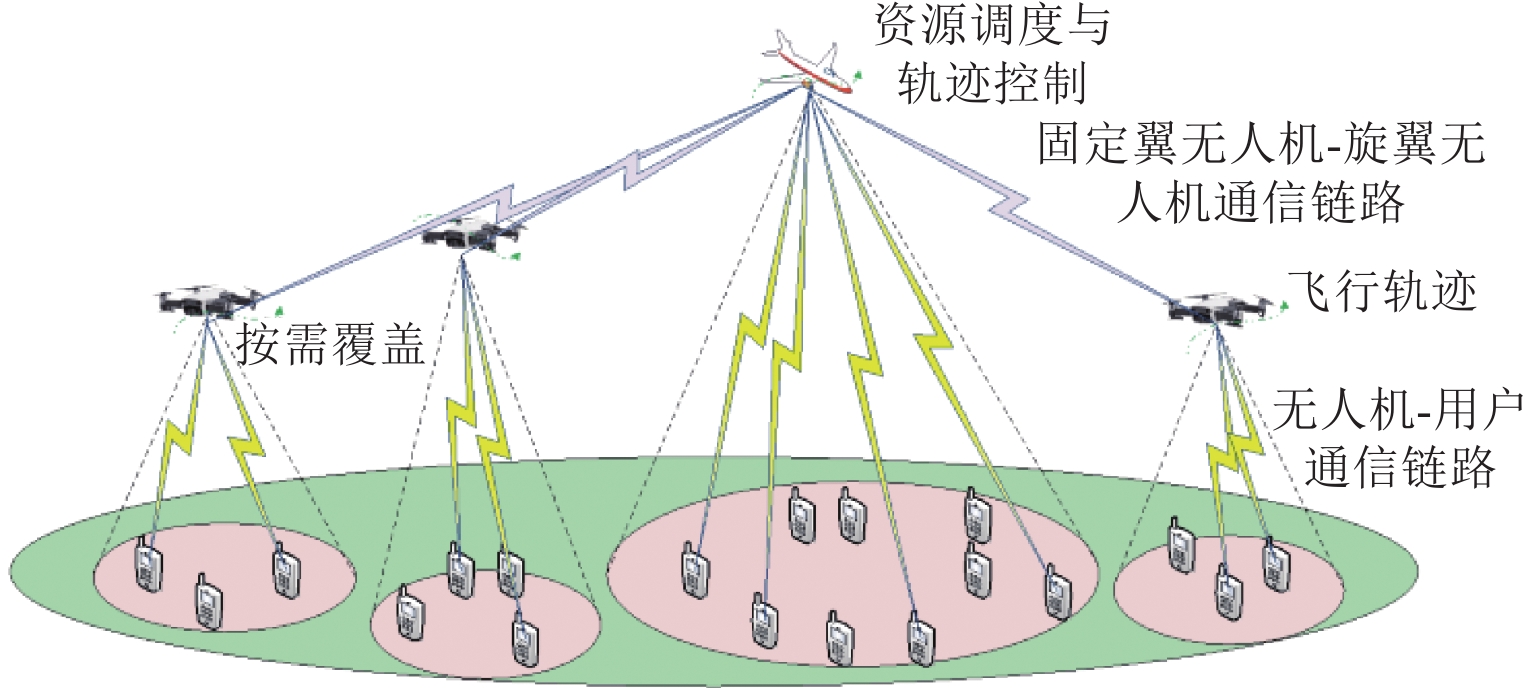
 下载:
下载:
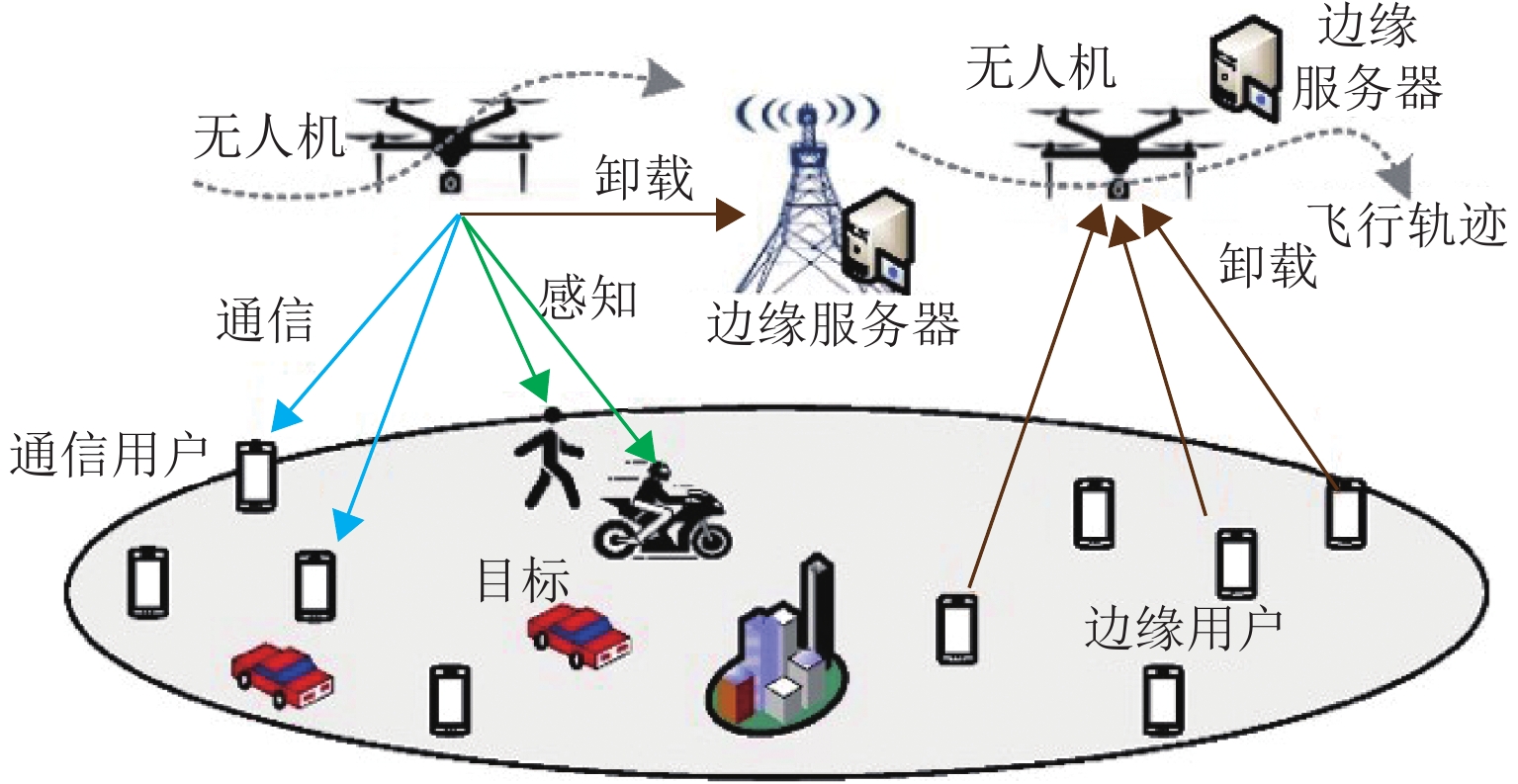
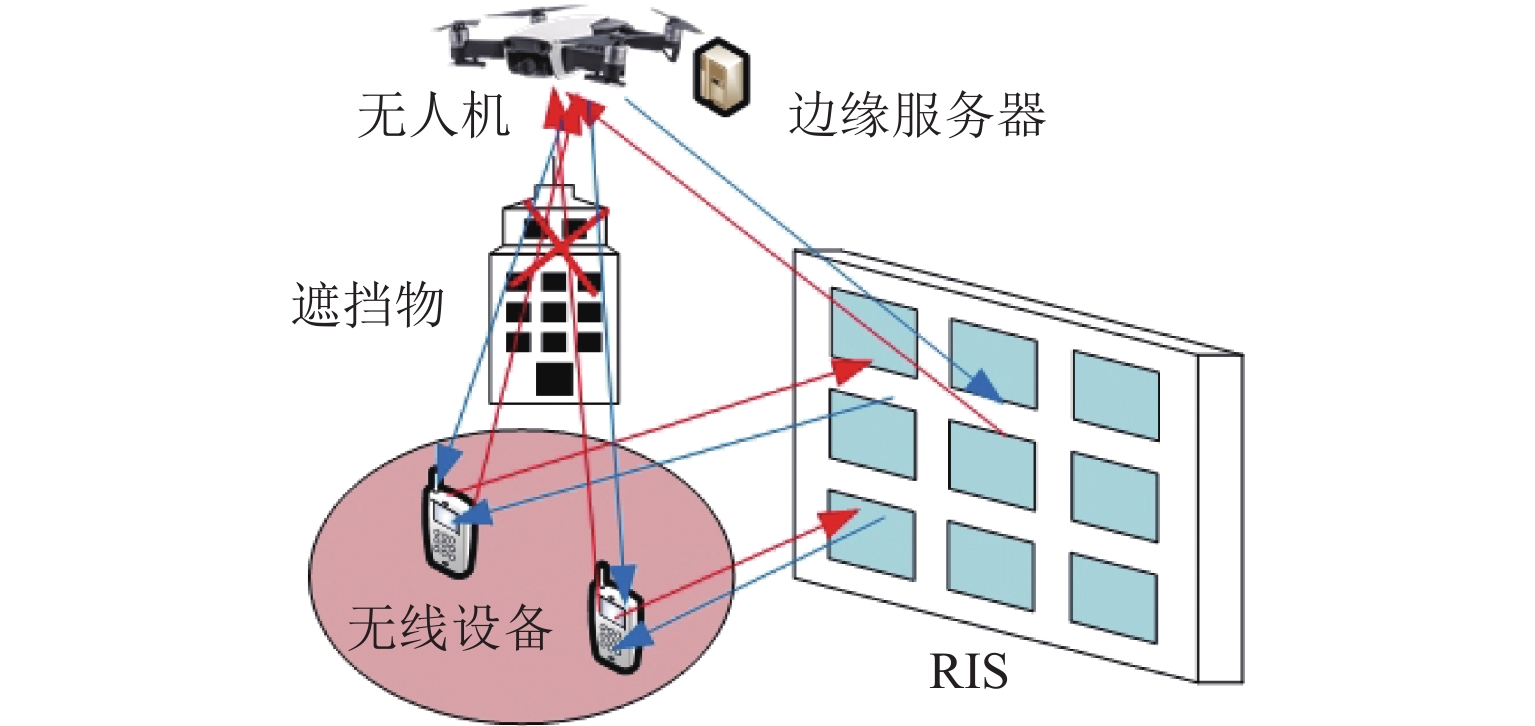
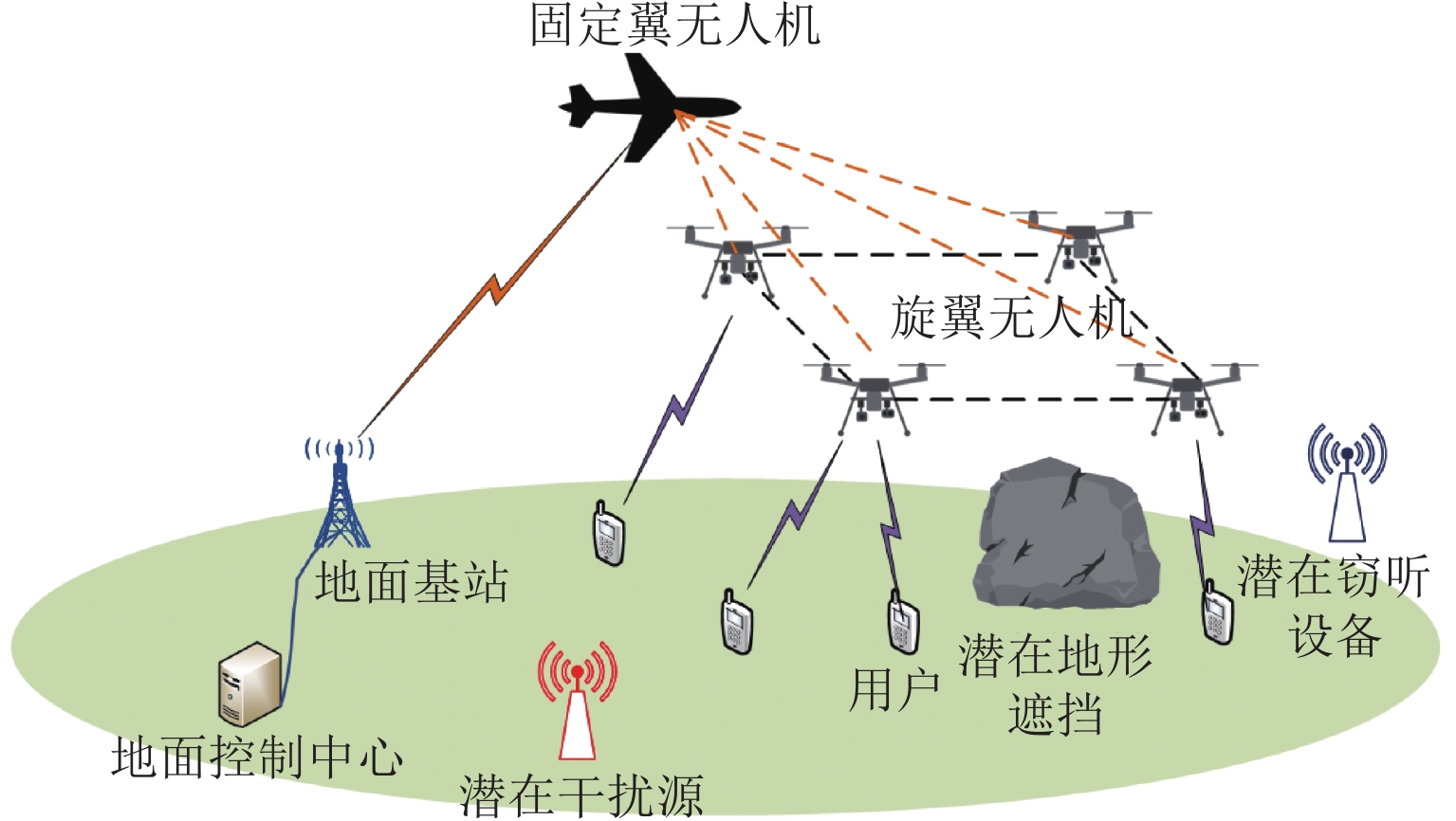
 百度学术
百度学术
